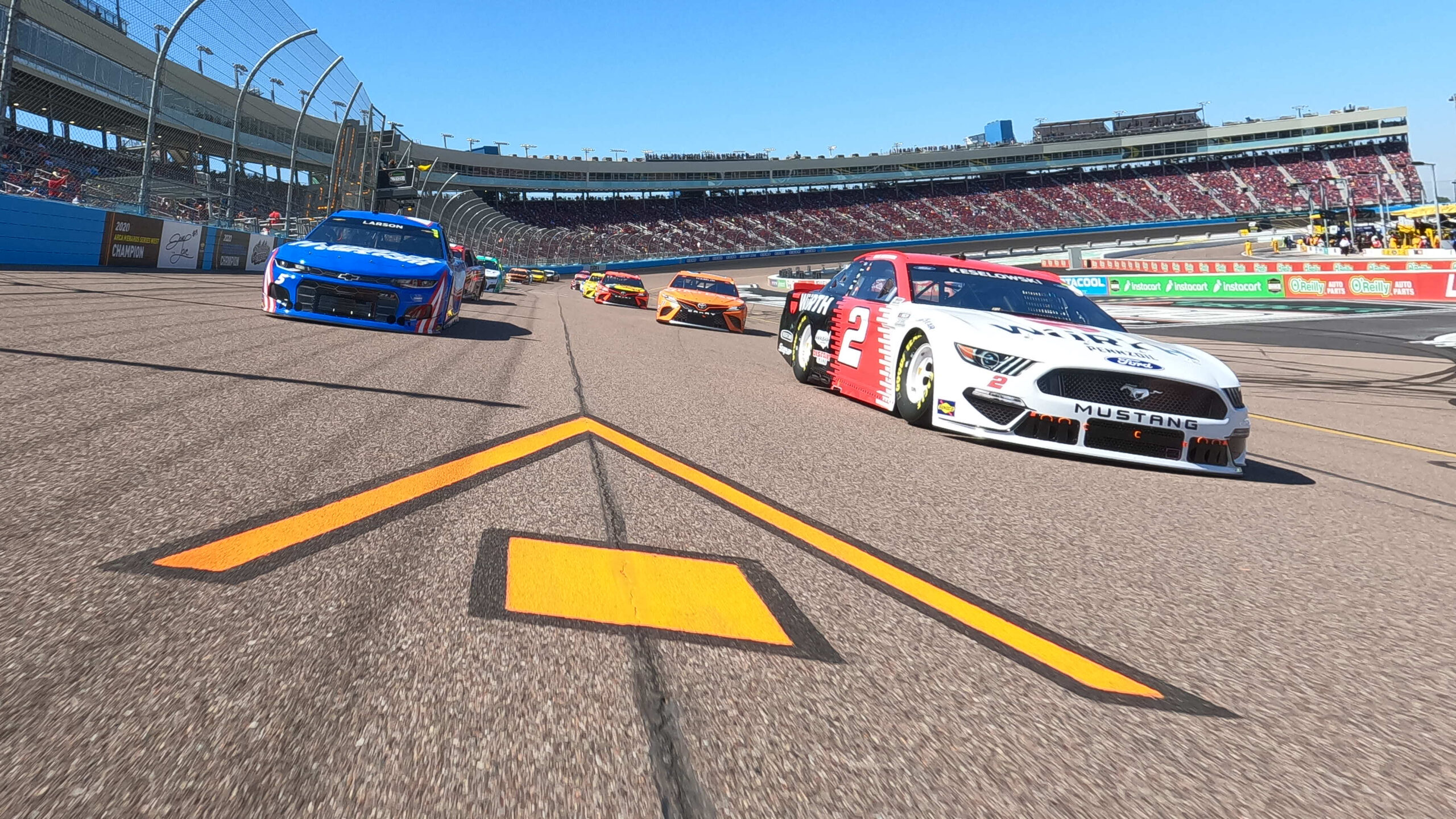
NASCAR is a sport in a state of constant change, and rules changes come every year. Some rules changes have been good, but others have been bad. What are the best and worst rule changes of the last 20 years in NASCAR?
In 2009, NASCAR changed the rules regarding restarts. Instead of double file with lead lap cars on the outside and lapped-down cars on the inside, NASCAR moved to double file shootout style restarts with the cars in order of position just like the start of a race. It’s had some moments where it has not worked, such as Chicago this year and COTA in 2021 due to rain, but, generally, it has worked.
It has made restarts more exciting, and the wave around rule plus the “Lucky Dog” counteracts the disadvantage lapped cars have under this format. Lapped cars would previously be in the way of the leaders on restart, which would cause the leaders to race them instead of the drivers they were actually racing.
This rule was created out of one of the worst officiated races in NASCAR history, the 2015 Playoff race at Talladega. A rash of late cautions forced NASCAR to implement an overtime line for the cars to cross in order for an overtime attempt to count. If the cars did not get there before a caution flew, they would keep attempting until they got to the overtime line.
It was a terribly annoying rule that would cause a lot of unnecessary controversy. The rule was adjusted to make the start-finish line the overtime line in 2017, so, it still sort of exists to this day. It created the unlimited Overtime attempts rule, which is another controversial rule.
While the double-file restarts have generally been popular, one flaw with them was that one lane on a restart would have a distinct advantage over another. This would cause crew chiefs and drivers to count cars at the end of pit road to allow themselves to start on the correct lane. NASCAR tested the choose rule at the 2020 All-Star Race at Bristol, and they implemented it later in the season.
It fixes the issue of drivers counting cars and slamming on the brakes at the end of pit road. It has worked to this point, and it makes for an interesting strategy play during restarts.
In a precursor to stage racing, NASCAR implemented a 20-minute caution clock in the Truck Series in 2016. It was obvious that NASCAR was trying to artificially make the race more exciting by creating more restarts. It sort of exists now with stage racing, but the caution clock was extreme.
Long green flag runs were a thing of the past in the Truck Series. It also made the races feel like a Saturday Night short track event rather than a big league NASCAR race. It just felt unprofessional.
While NASCAR’s implementation of the rule has not been perfect, the use of wet weather tires has been a net positive for NASCAR. Some races that may have started far later were able to start earlier because of wet weather tires. They were used on road courses before 2023, but they saw some action on ovals this year too.
The Chicago Street Race may never have happened if the wet weather tires do not exist. It also allowed the All-Star Heat Races to run in a much more reasonable time frame.
The damage vehicle policy was instituted by NASCAR in 2017, and it has made for a major change in how NASCAR accidents are viewed. Previously, teams would work in the garage for however long it took if there was any chance of getting the car back into the race. Now, the damaged vehicle policy does not allow that to happen.
It was implemented to save the team money from vehicle repairs. Maybe it does, but, it is tough to see a car unable to come back out on the track after what seems like a relatively minor incident.
Safety improvements in NASCAR have been one of the sport’s crowning achievements over the last 20 years. NASCAR has suffered zero fatalities since 2001, and the Car of Tomorrow had a cleaner record than any. It was the first generation of cars to have zero fatalities.
The safety improvements included a larger driver’s compartment, foam in the doors, and an overall safer race car. Regardless of what people think about the looks and the racing product, the car did what it was designed to.
The Next-Gen car received positive reviews for its’ intermediate-track product, but the short-track product has been a disappointment. What makes it even more disappointing is how good the product was with the Gen-6 car.
Short-track racing is important to NASCAR. Formula One and IndyCar are not rolling up to Martinsville and Bristol. It is what makes NASCAR unique, and, if the product is bad, then it takes away part of what makes NASCAR unique.
Previously, NASCAR drivers would race back to the start-finish line when a caution came out to set the running order. It would set up some dangerous scenarios with drivers avoiding carnage trying to race back to the line.
Now, NASCAR has scoring loops around the track that set the caution order every time a caution flag comes out. It helps to not have so many cars racing each other around the track for a lap, which causes the potential for more incidents than necessary. Even though racing back to the line had some interesting moments.
The Gen-6 car struggled at intermediate tracks, so NASCAR decided to try something different in 2019. They decided to implement a low horsepower, high downforce, and high drag rules package to improve the product on intermediate tracks. It may have made some improvements, but it was not popular.
Dirty air became a massive issue, and the cars were too easy to drive. On top of that, the cars were slowed down even more than they already had been. Drivers did not like it, and fans grew to not like it over the years. It all came to a head at Kansas in 2020 when Joey Logano held off Kevin Harvick in dirty air for multiple laps.
These are some of the best and worst rule changes in NASCAR history. What will be the next ones?
